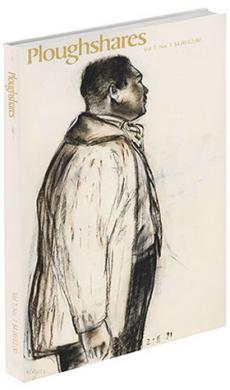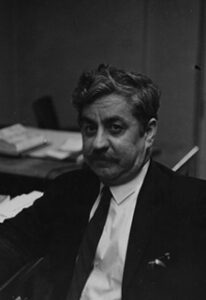The Mind Afoot: rev. of The Knife and Other Poems by Richard Tillinghast
A more conventionally integrated dramatic element informs Richard Tillinghast's new book.
The Knife and Other Poems (Wesleyan, $3.95) is his first collection in eleven years. The title poem evokes the knife as a passive symbol, like Whitman's broad-axe or Dickey's helmet: a hard, masculine image of potential violence, and yet, in this poem as in Whitman's and more obliquely in Dickey's, an image quite literally of brotherhood. The speaker drops his knife, "the knife I had used to cut a fish open," and his brother dives from the canoe to rescue it "in the unstoppable live water. . .while the long-jawed predatory fish/ the alligator gar/ watched out of prehistory." The knife itself is rich in ambiguity: it is a weapon as well as a tool, it cuts open a fish and yet becomes the object by which brotherly love is demonstrated.
"The Knife" suggests that the tie between men is also a tie between men and the real world of objects; suggests that the proper use of these objects is to enrichen their lives, not to kill or destroy or misuse the earth. "The unstoppable live water" in which the brother dives is the stark cold reality of aging and the passage of time, as in "time is the stream I go afishing in." The knife is "saved from time" when the brother brings it to the surface, since symbols, understood, do not age. Poeple do, but the lesson of the poem is that "the look on my son's face," at the moment of birth, is "older than anything that dies can be."
This then is a poem about the knowledge gained in the imaginative reading of a symbolic world — as to some extent, perhaps all poems are. In tone and choice of subject matter, its evocation of the essential love of brother, father, and son, it is decidedly Whitmanesque. The sensitive free verse also reminds the reader of Whitman, particularly in that Tillinghast makes no attempt, unlike so many postmodern poets, to disguise natural speech rhythms with abrupt or apparently random end-stops or deliberately rough cadences. In rhythm as well as language, Tillinghast's poems are more leisurely, less intense than Glück's or Southwick's or Simic's. Their poems attempt to recreate the world itself through imagination and the imaginatively-realized self, whereas Tillinghast invokes the symbolic possibilities of the "real" world of Emerson. Like Glück, though, Tillinghast infuses the lyric poem with a narrative that is an allegory of the mind realizing knowledge. This is the poem of
self-recognition, the genre of Coleridge's
Kubla Khan, and it seems to be the definitive post-modern genre.
Tillinghast in his open traditionalism reminds us that the high Modernist mode, derived from French Symbolism and the American Adamic vision, is still viable. Whether this Romantic and dualistic vision will continue to inform our best poetry, or whether the Surrealist vision of the imagination as the ultimate first cause for poetic models of the mind will dominate our poetry is not so important as that good poems — poems that demonstrate aesthetically how and what we can think and feel and perceive — be written. All four of these poets have written such poems. How we choose to read them may tell us as much about ourselves as the poems themselves do. If the news from poems is hard to get, it is nevertheless worth the trouble. If we die miserably for lack of it, we cannot blame poets such as these, who offer us so much; but only ourselves for failing to recognize our imaginative selves in theirs.

